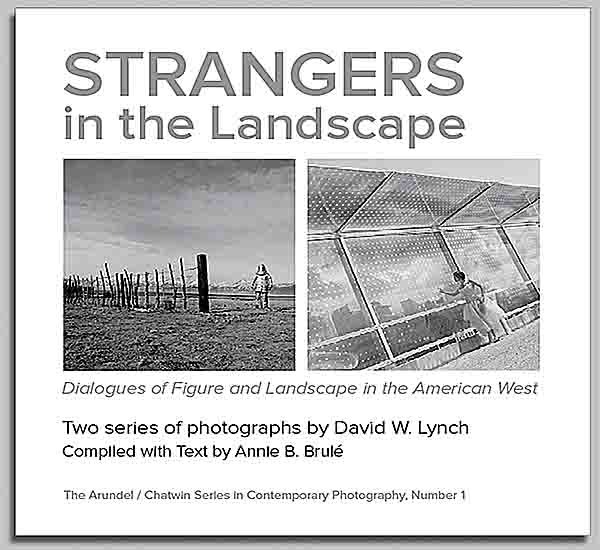A figure in a firefighter’s suit appears in assorted Western landscapes. A young woman in a dress fashioned from bubble wrap populates dreamy urban and natural environments. Both anomalous and thought-provoking figures become the actual and metaphorical stars in a new book by island photographer David Lynch, “Strangers in the Landscape: Dialogues of Figure and Landscape in the American West.”
The book compiles two series of photographs — one showcasing the fire suit, the other with the bubble wrap dress — by Lynch, with text by Annie Brulé. A release party for the new book is scheduled from 6 to 8 p.m. Friday at the Hastings-Cone Gallery next to Snapdragon. Lynch will show slides, and Brulé will read excerpts from the book.
Lynch, who grew up in western Massachusetts, began his photography career shooting landscapes near his hometown of Northhampton and across the terrain of New Zealand. When a friend invited him on a trip to Guatemala in 1991, Lynch agreed to go and soon found himself as a stranger in a new land, not knowing the language, the culture or the topography. The novelty hooked Lynch. He stayed for a year to shoot — as a photojournalist — images with social commentary, a documentary project he continues to this day throughout Central America. But Lynch also longed to do something different, which is where the fire suit and bubble wrap dress come in.
“I always wanted to shoot outside the box, think outside the box,” Lynch said. “I had the fire suit with me; it was following me around everywhere I moved. I thought it would be funny and fun to shoot.”
When Lynch moved to Vashon in 1997, he brought both the fire suit and dress with him. Knowing the humor and satire of the suit, Lynch decided to take it on the road for a month for a photo shoot of indeterminate nature in 2003.
“I was not really sure what I’d do with it. The idea was forming as I was on the road.”
As Lynch drove past the sparse lands of the Southwest, possible scenarios floated through his mind, but nothing stuck. Then one day, through the tumbleweeds, the word “Hope” appeared, and Lynch knew he’d landed on the perfect scene.
“It’s the name of a place, but I came in the back way, not through the town. I’m not a religious person, but I saw it as a sign from the universe,” Lynch said.
Lynch uses the fire suit and bubble wrap dress as metaphors for humankind and the landscape as a metaphor for the human condition. While the fire suit conjures isolation and protection from the sometimes harsh and brutal outer world, he said, the girl in the bubble wrap dress is all about the strength of fragility and exploring the feminine in contemporary culture.
Brulé’s essay “The West is a Territory Inside Us” opens by saying skin comes in all kinds of thicknesses — an allusion to the way we react to what life brings. Do we form a tough outer layer, Brulé asks, or remain soft and open, or perhaps it is a complex combination.
Brulé writes, “These otherworldly figures ultimately ask us, ‘How will I inhabit my own experience?’ Will I wall myself off in fire-proof immunity, a mirror of the world around, untouchable and, perhaps worse, unable to touch? Or will I remain open, vulnerable to the winds that buffet this earthly existence, and to the possibility of being blown off course or pierced by sharp edges, in exchange for the exhilaration of walking through life whole, exposed, and alive? We are all strangers in the landscape, entering and leaving this world alone; it is up to us which kind of skin we clothe ourselves in for the journey.”
Along with copies of the book, prints of the images will be sold at the reading.


